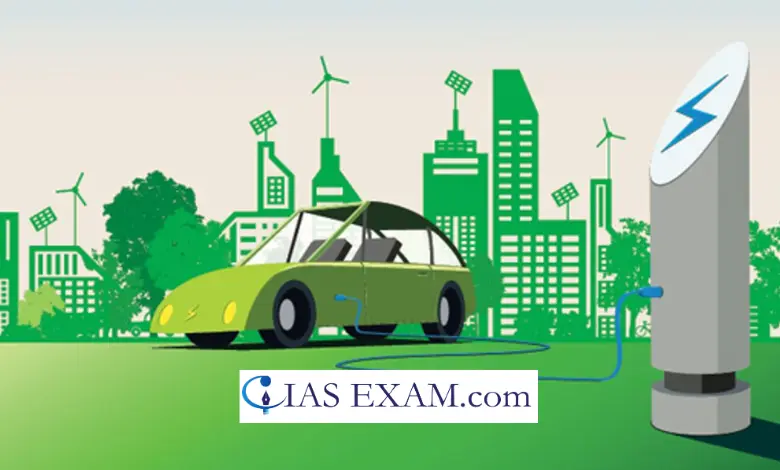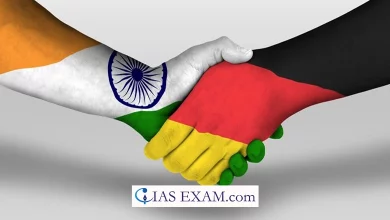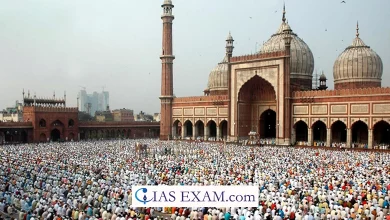Daily Current Affairs for UPSC
Electric Mobility Promotion Scheme (EMPS) – 2024
Syllabus - Government Policy and Interventions [GS Paper-2]

Context
The Electric Mobility Promotion Scheme (EMPS), 2024 came into effect to push for development of an electric vehicle (EV) manufacturing ecosystem in the country.
About
- It aims to provide further impetus to inexperienced mobility and promote electric powered vehicle production in the country.
Components of the scheme
- Subsidies: Demand incentives for electric -wheelers & electric powered 3-wheelers;
- Administration of Scheme including IEC (Information, Education & Communication) activities and fee for project management agency.
Key Features
- It is a fund-confined scheme with a complete outlay of INR 500 crore, supplying an incentive of INR 5,000 per kilowatt-hour of battery capacity.
- It aims to help the adoption of 3,72,215 EVs, consisting of 3,33,387 electric powered two-wheelers and 38,828 electric powered 3-wheelers.
- It could be applied for a period of 4 months, from April 1, 2024, to July 31, 2024.
- Two and Three Wheelers on the Core:
- Electric Mobility Promotion Scheme – 2024 does well to maintain consciousness at the segments that have led the electric vehicles revolution in India.
- Since the FAME I, electric powered two-wheeler and 3-wheeler segments have attracted the highest demand among customers in comparison to vehicles and different industrial segments because of lower acquisition prices, decrease going for walks costs, ease of charging and parking, amongst different reasons.
- FAME II (2019-2024) refined its technique by emphasizing on advanced battery technologies.
- States came up with electric vehicle regulations across the country at some stage in the same duration, playing an important role for excessive two-wheeler and three-wheeler demand, with more incentives and manufacturing guide.
Analysis of EMPS 2024
- Reduction in Financial Support: The total incentive allocation under EMPS has been decreased to INR 500 crore for a period of 4 months, from April 1-July 31, 2024.
- It is a widespread discount as compared to the INR eleven,500 crore outlay of its predecessor, FAME II.
- Multiple Caps, Fewer Benefits: EMPS gives an incentive of INR 5,000 per kilo-watt hour of battery capacity. However, the quantity can not exceed 15% of the ex-manufacturing unit fee or INR 10,000 for two-wheelers / INR 25,000 for e-rickshaws and e-carts / INR 50,000 for e-automobiles, whichever is lower for each section.
- It has led to a significant reduction in monetary support, growing the price of motors.
- Reduction in Incentives: It is expected to cause a mean incentive discount by 63% for two-wheelers, 37% for e-vehicles, and 38% for e-rickshaws.
- Re-registration Roadblock: EMPS asks for re-registration of original equipment manufacturers (OEM), their sellers, and vehicles on an internet portal to be eligible for subsidies.
- It could potentially create a roadblock for manufacturers and clients.
Conclusion
- The Electric Mobility Promotion Scheme 2024 is a huge step closer to promote electric powered mobility in India. Despite the reduction in financial incentives in comparison to its predecessor, FAME II, the scheme makes a speciality of key factors including the improvement of an EV production ecosystem and the advertising of inexperienced mobility.
- As India continues to grapple with environmental challenges, tasks like EMPS 2024 play a crucial role in steering the country towards a sustainable future.
Source: The Business Standard
UPSC Mains Practice Question
Q.How is efficient and affordable urban mass transport key to the rapid economic development in India? (2019)





.png)



